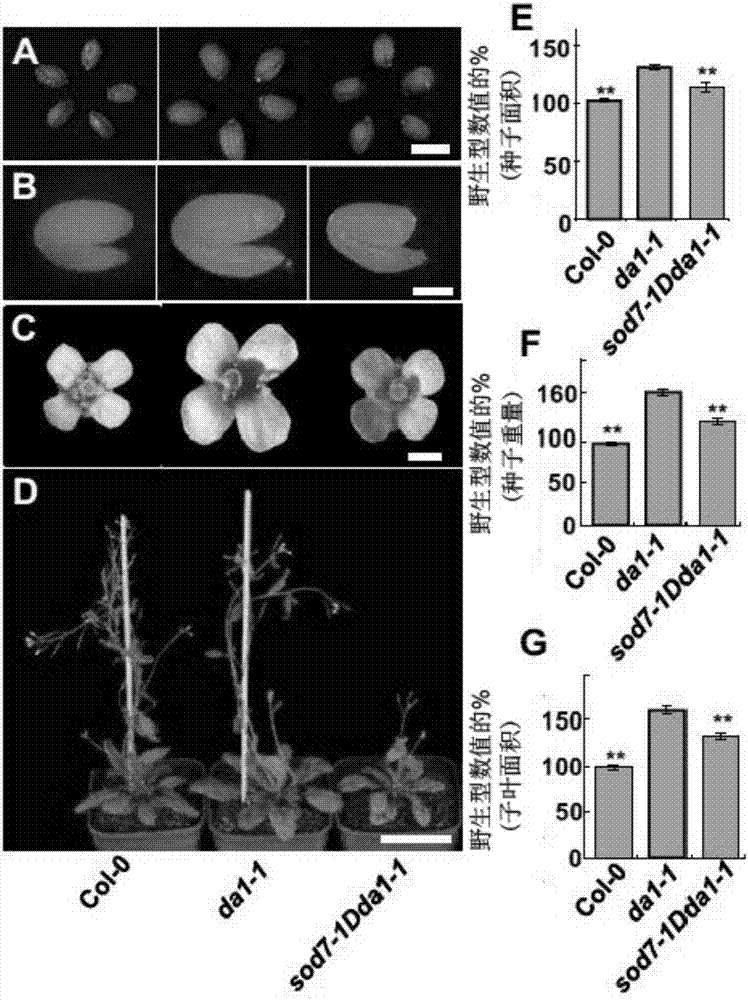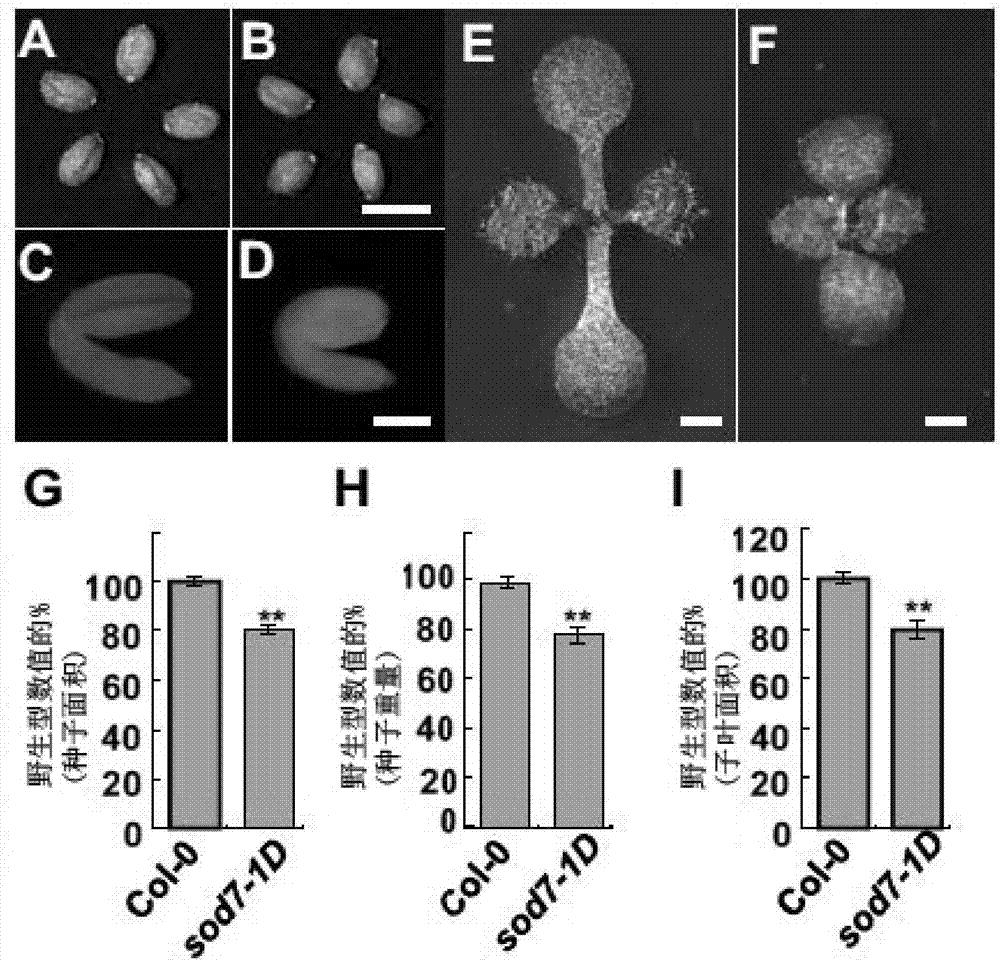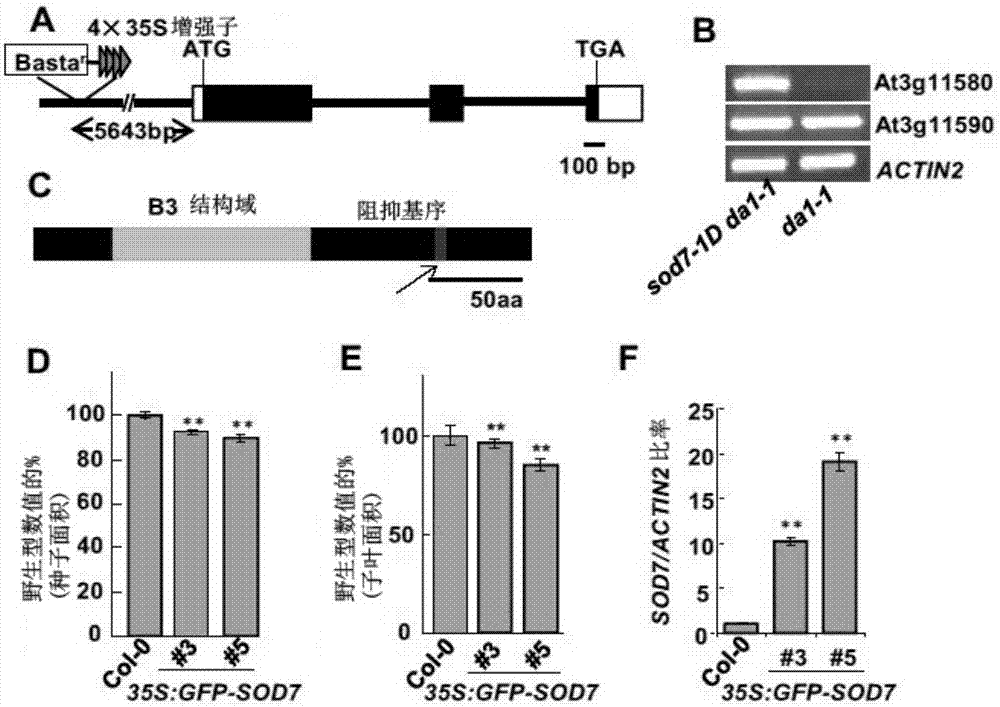Plants with increased seed size
A technology of plants and homologues, applied in the direction of angiosperms/flowering plants, plant peptides, plant products, etc., can solve the problem of increasing cell proliferation
- Summary
- Abstract
- Description
- Claims
- Application Information
AI Technical Summary
Problems solved by technology
Method used
Image
Examples
Embodiment
[0163] method
[0164] Plant material and growing conditions
[0165] Arabidopsis Columbia (Col-0) was used as the wild-type line. da1-1, sod7-1D, sod7-ko1 and ngal3-ko1 in the Col-0 background. sod7-1D was identified as a dal-1 repressor by using the T-DNA activation tagging approach. sod7-ko1(SM_3_34191) and ngal3-ko1(SM_3_36641) were identified in AtIDB ( www.atidb.org ) and from the ArabidopsisStock Center NASC Collection. T-DNA insertion was confirmed by PCR, and by sequencing using the primers shown in Table 1. Arabidopsis plants were grown at 22°C under long day conditions (16 hours light / 8 hours dark). Activate tag screening. The activation-tagged plasmid pJFAT260 was introduced into da1-1 mutant plants using Agrobacterium tumefaciens strain GV3101 (Fan et al., 2009; Fang et al., 2012), and T1 plants were selected using the herbicide Basta. Seeds produced from T1 plants were used to isolate modifiers of dal-1.
[0166] Morphological and cellular analysis ...
PUM
 Login to View More
Login to View More Abstract
Description
Claims
Application Information
 Login to View More
Login to View More - R&D
- Intellectual Property
- Life Sciences
- Materials
- Tech Scout
- Unparalleled Data Quality
- Higher Quality Content
- 60% Fewer Hallucinations
Browse by: Latest US Patents, China's latest patents, Technical Efficacy Thesaurus, Application Domain, Technology Topic, Popular Technical Reports.
© 2025 PatSnap. All rights reserved.Legal|Privacy policy|Modern Slavery Act Transparency Statement|Sitemap|About US| Contact US: help@patsnap.com



